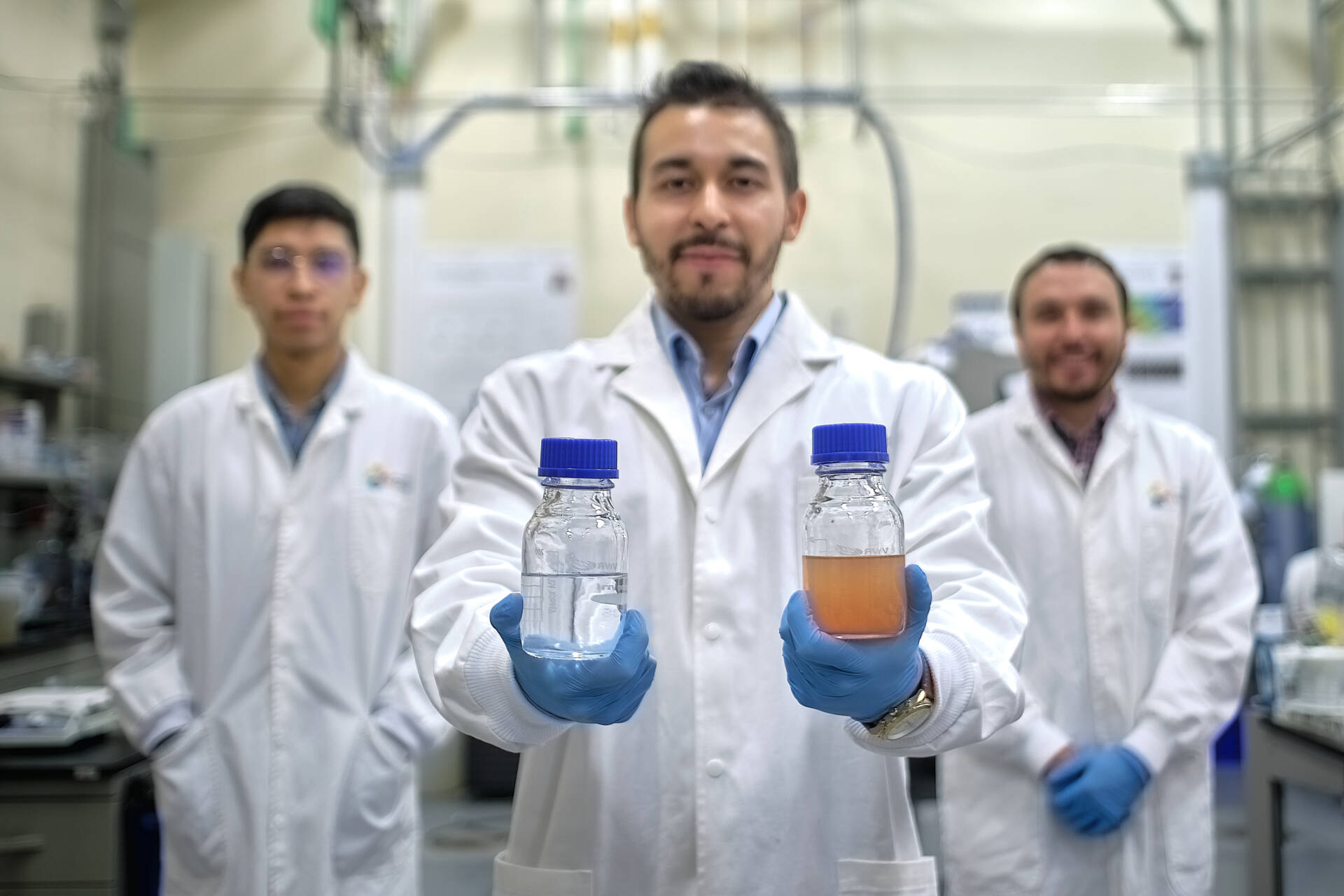The reuse of treated sewage effluent is a critical strategy to address water scarcity around the world.
Many industries produce highly saline wastewater that cannot be treated by conventional processes, while the use of seawater for toilet flushing could reduce the demand on valuable freshwater resources and energy required for desalination. However, current wastewater treatment technologies are sensitive to high salinity and have very low effectiveness in salt water.
Researchers in Pascal Saikaly’s group have addressed the problem with a novel energy-efficient wastewater treatment technology, known as anaerobic ammonium oxidation (annamox) for high-salinity wastewater treatment and nonpotable water reuse.
The key to the discovery, says postdoc Dario Shaw, was identifying novel bacteria in the Red Sea, which they enriched and cultured in the lab. These annamox bacteria effectively remove nitrogen from high salinity wastewater. The team of Shaw and two Ph.D. students, Julian Tobon and Carlos Bibiano Guadarrama, is now scaling up the technology and patenting the novel process.
Importantly, the group has discovered that, as well as directly removing ammonium present in wastewater, the annamox process also saves energy and does not emit greenhouse gases.
“The annamox process also saves energy and does not emit greenhouse gases.”
“We know that the future of wastewater treatment is to make it more energy efficient,” says Shaw. “Compared to conventional nitrogen-removal processes, our technology saves more than 60 percent on operational costs while reducing greenhouse gas emissions.”
Although annamox bacteria were discovered about 20 years ago, they are difficult to culture because they grow very slowly and require very specific conditions.
“I decided to open this research field in my group because there are so many things we don’t know about these bacteria,” says Saikaly.
“Initially we tried to enrich marine anammox bacteria using freshwater inoculum sources and fed them with artificial, commercially produced sea salts, but with no success. So, we took advantage of our location next to the Red Sea and started using real seawater as a source of inoculum. Surprisingly, we succeeded in enriching a novel marine annamox bacteria from the Red Sea,” recalls Saikaly.
“We set up our lab just for the study of annamox bacteria and from there we began to target questions to address the knowledge gaps in the field, always keeping in mind potential applications.”
Shaw believes a key to the project’s success has been the team’s ability to apply themselves in many different areas. “The research requires multidisciplinary skills – in environmental engineering, bioprocess engineering, microbiology, analytical chemistry, bioinformatics – it is not difficult to find someone who is expert in one of other of these, but for this work we need to have knowledge in all these areas,” he says.

As part of his Ph.D. project, Shaw set up the first reactor more than six years ago and it has been in continuous operation ever since.
“These bacteria are difficult to cultivate and maintain in lab conditions and are often present in very low numbers in natural environments. They also grow very slowly compared to other bacteria,” he explains.
As a consequence, the process of enriching anammox bacteria can take years of continuous bioreactor operation. “For example, it took two years of continuous nurturing to increase the population of the marine anammox that we grew from the Red Sea.”
“It takes a lot of effort, dedication and patience to maintain these valuable cultures.”
Water security is one of the most pressing goals of the Kingdom’s Vision 2030.
Saikaly says we are entering a new era in wastewater treatment, which involves resource recovery in the context of a circular economy.
“A conventional wastewater treatment process requires a lot of energy to oxidize the organics and ammonium, in the process emitting greenhouse gases. The quality of the treated sewage effluent is not suitable for nonpotable reuse applications.
“Therefore, we have to innovate and come up with novel ideas and sustainable wastewater treatment technologies that consume less energy, have lower greenhouse gas emissions and enable recovery of water suitable for nonpotable reuse,” he says.
“We are hoping to scale up and promote the annamox process in Saudi Arabia where it is very important to achieve water circularity,” says Saikaly.

